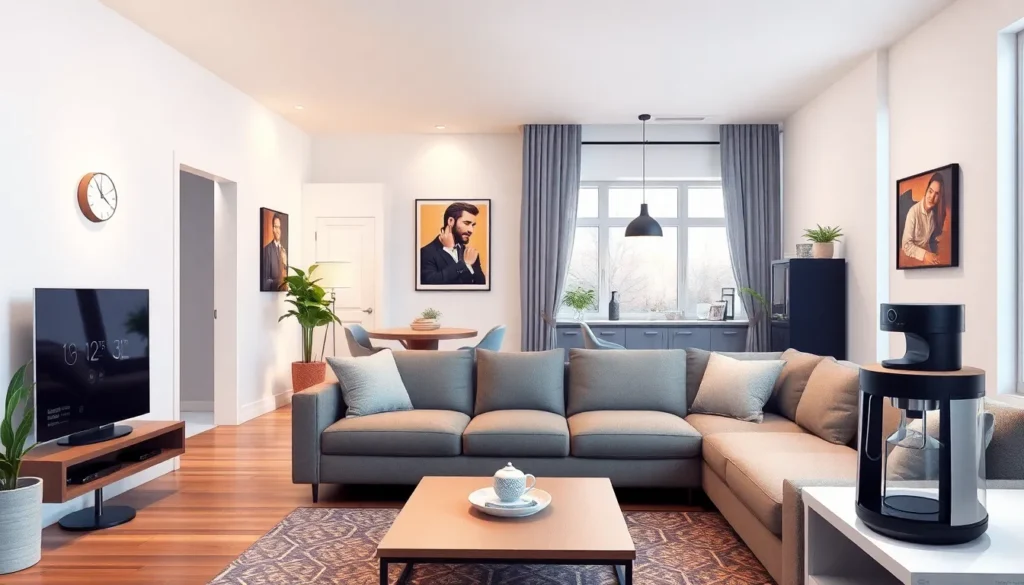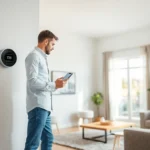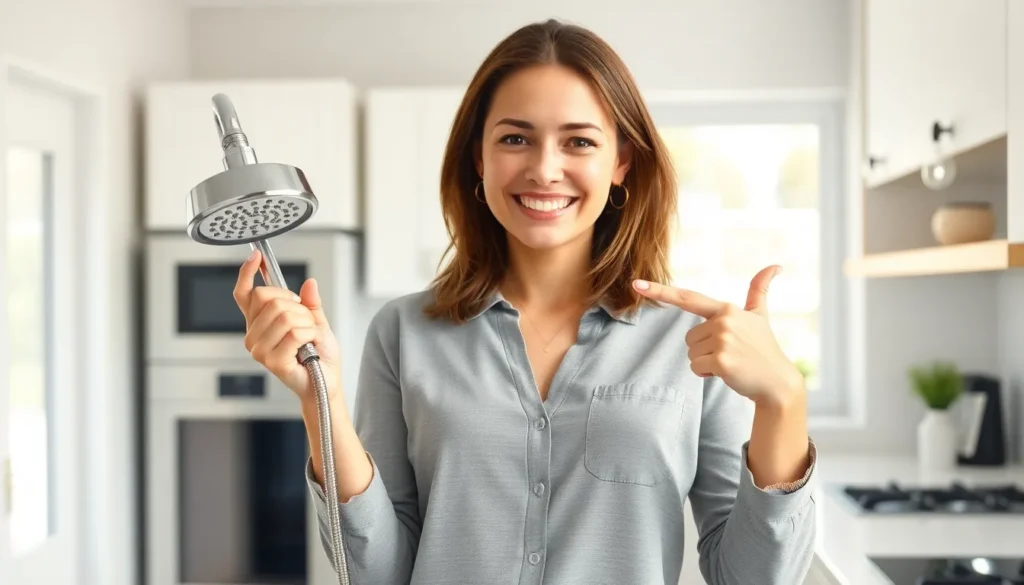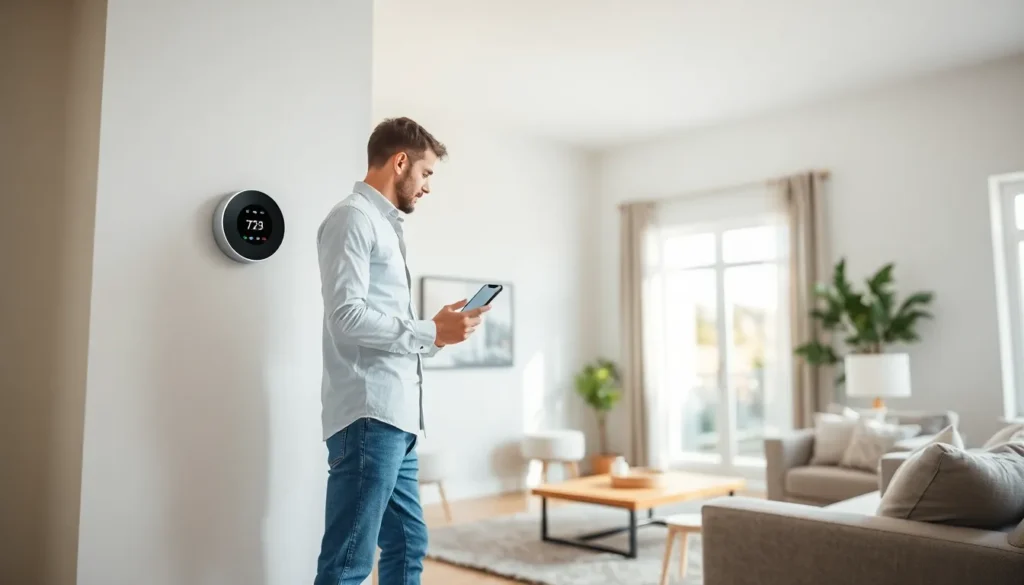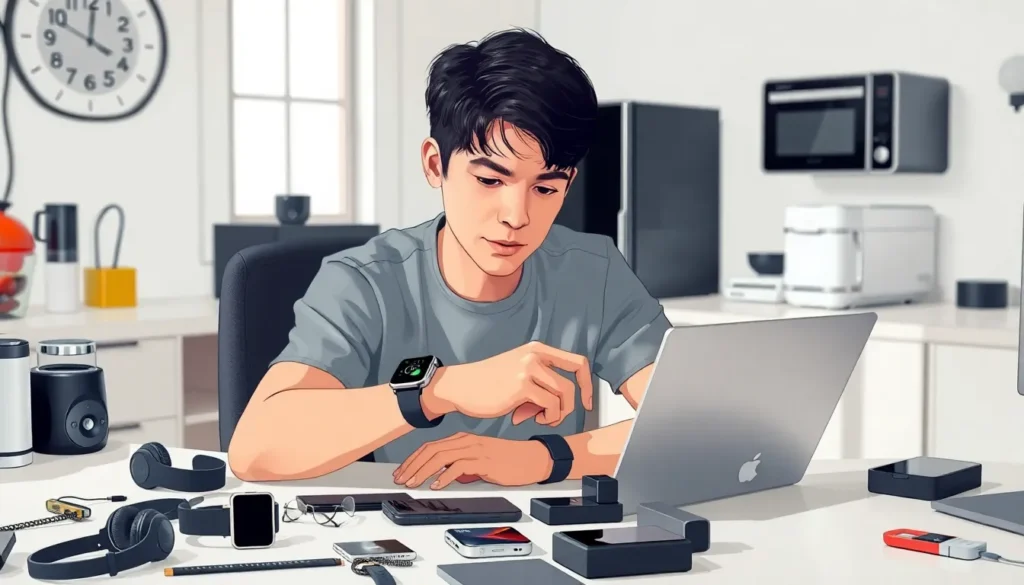Imagine walking into your home and having it greet you like a long-lost friend. Lights flicker on, your favorite playlist starts playing, and the coffee pot brews itself—all without lifting a finger. Welcome to the world of house automation, where technology transforms everyday living into a seamless experience.
Table of Contents
ToggleWhat Is House Automation?
House automation refers to the integration of technology into home systems to enhance convenience and efficiency. This technology enables the remote control and monitoring of various household functions through devices connected to the internet. Smart speakers, thermostats, security cameras, and lighting systems represent some examples of components used in house automation.
Automation systems enable homes to respond to users in real-time. For instance, smart lighting adjusts based on occupancy or timers, while automated thermostats learn preferences and optimize energy use accordingly. Remote access allows individuals to control devices even when away from home, adding to the convenience and security.
Additionally, house automation promotes energy efficiency. Devices can communicate with each other, creating a cohesive system that minimizes waste. For example, when occupants leave the house, smart sensors can automatically turn off lights and adjust heating or cooling settings.
Enhanced security features also benefit from house automation. Surveillance cameras can send alerts directly to smartphones, providing real-time monitoring. Door locks can be controlled remotely, allowing users to grant access to trusted visitors without physical keys.
Customization plays a significant role in house automation. Homeowners can tailor settings to fit their lifestyles, choosing routines that align with daily activities. Whether it’s scheduling coffee to brew in the morning or programming lights to illuminate at sunset, automation creates a personalized living environment.
House automation transforms how individuals interact with their homes. It combines security, efficiency, and comfort, resulting in a more connected and user-friendly living experience.
Benefits of House Automation
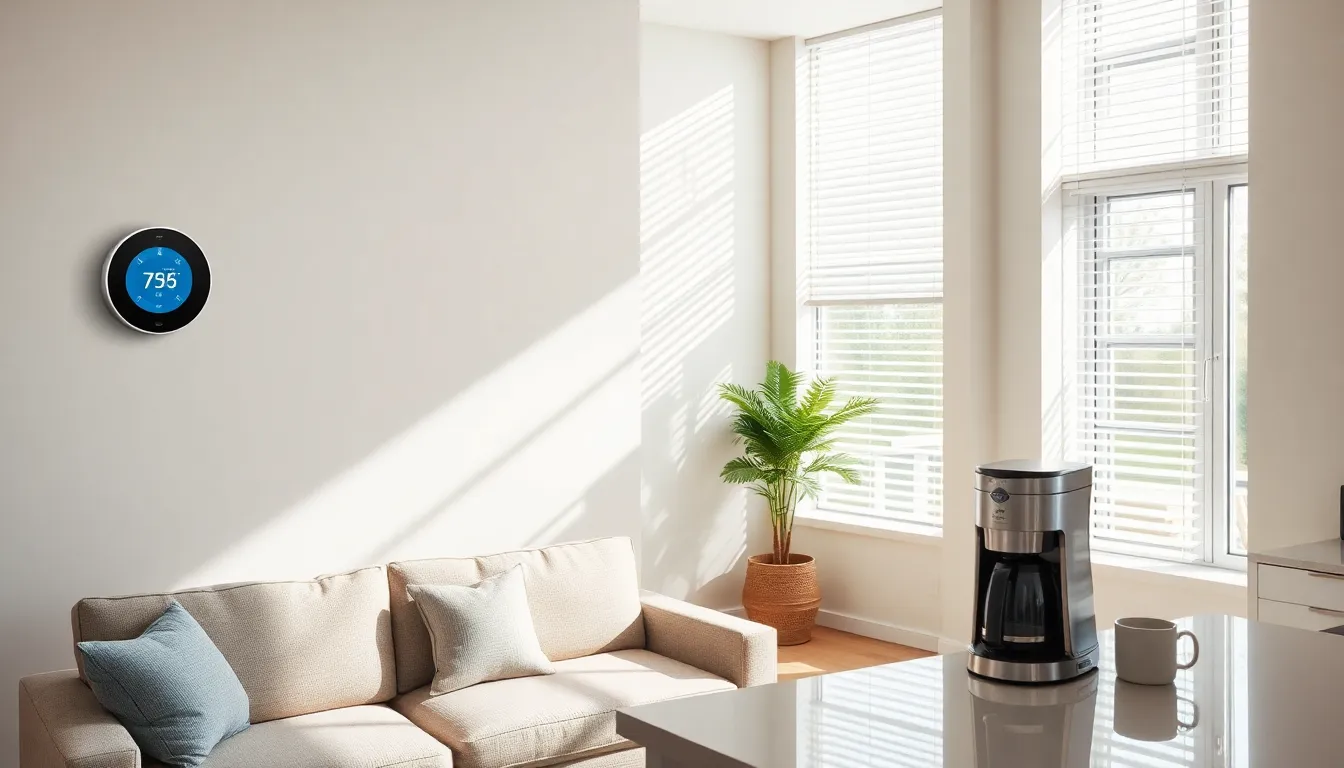
House automation enhances home life significantly through advanced technology. It provides numerous advantages that cater to convenience, security, and energy usage.
Increased Convenience
Convenience ranks high among the benefits of house automation. Automated systems allow homeowners to control various aspects of their environment from a single device. Smart lighting can adjust itself based on the time of day, eliminating the need for manual switches. Voice-activated assistants enable effortless management of appliances, music, and temperature settings. Automated coffee makers can start brewing at a set time, ensuring fresh coffee is ready in the morning. Efficiencies in daily tasks make life easier and more enjoyable, freeing up time for other activities.
Enhanced Security
Enhanced security represents a crucial advantage of house automation. Smart security cameras provide real-time surveillance and alert homeowners of any suspicious activity. Automated door locks ensure access control, allowing entrance via smartphones instead of traditional keys. Motion sensors inside and outside the home offer additional layers of protection, detecting intruders before entry occurs. Remote monitoring through mobile apps empowers homeowners to check their property from anywhere, granting peace of mind. Overall, these features create a safer living environment.
Energy Efficiency
Energy efficiency stands out as a significant benefit derived from house automation. Smart thermostats learn from user behavior, optimizing heating and cooling to minimize energy consumption. Automated blinds can adjust based on sunlight levels, reducing reliance on heating or cooling systems. Scheduling devices to run during off-peak hours can lower energy costs significantly. With interconnected systems communicating with one another, waste becomes minimal. Homeowners enjoy not only reduced bills but also a positive impact on the environment.
Key Components of a House Automation System
A house automation system consists of various elements that work together to enhance home management and convenience. Key components include smart sensors, a central hub, and smart devices.
Smart Sensors
Smart sensors play a crucial role in house automation. These devices detect environmental changes, such as motion, temperature, and light levels. For example, motion sensors can trigger lights to turn on when someone enters a room, ensuring security and energy efficiency. Temperature sensors monitor indoor climate and can communicate with thermostats to adjust heating or cooling based on user preferences. These sensors offer real-time data, enabling intelligent responses from other connected devices.
Central Hub
The central hub serves as the backbone of the house automation system. This device connects various smart devices, facilitating communication between them. Often, this hub integrates with smartphones or tablets, allowing users to control their home’s functions from a single interface. A reliable central hub supports multiple protocols, ensuring compatibility with a wide range of smart devices. It streamlines automation processes by coordinating commands and schedules, simplifying user interaction.
Smart Devices
Smart devices encompass a wide array of products that enhance home automation. These include smart light bulbs, thermostats, security cameras, and appliances. Each device serves a specific purpose, contributing to a more efficient and secure living environment. For instance, smart thermostats learn user habits and optimize heating or cooling schedules, reducing energy costs. Additionally, smart security cameras provide real-time video feeds, enhancing safety. The integration of various smart devices offers homeowners flexibility, customization, and improved control over their home environment.
Popular House Automation Technologies
House automation technologies elevate home living by integrating smart features that respond to specific needs. Various solutions enhance convenience, security, and energy efficiency.
Voice Control Systems
Voice control systems permit hands-free operation of various devices. Smart speakers, like Amazon Echo or Google Nest, enable users to manage lighting, music, and appliances through simple voice commands. These systems integrate with other smart devices, allowing seamless communication between them. For instance, users can say “Turn off the lights” to achieve desired ambiance. Enhanced functionality includes ordering groceries, playing music, or setting reminders, all through voice interaction. Compatibility with multiple platforms ensures that diverse systems can work together, streamlining daily routines significantly.
Smart Lighting Solutions
Smart lighting solutions offer customizable and efficient lighting options for homes. Users can control brightness, color, and schedules through mobile apps or voice commands. LED bulbs equipped with smart technology adapt based on occupancy or time of day, improving energy efficiency and providing comfort. Integration with motion sensors ensures lights turn on when someone enters a room while turning off automatically when it’s empty. Customizable settings allow for different lighting scenes, catering to various activities or moods throughout the day. Advanced programming can even simulate occupancy when homeowners are away, aiding in security.
Home Security Systems
Home security systems provide robust features for protecting property. Smart cameras equipped with motion detection and real-time alerts offer homeowners peace of mind. Remote monitoring through mobile apps allows individuals to view live feeds or review recordings anytime. Automated door locks enable secure entry, eliminating the need for physical keys. Furthermore, integration with alarm systems enhances safety measures, triggering alerts during unauthorized access. Some advanced systems even interface with emergency services, ensuring rapid response in critical situations. Overall, these technologies create a comprehensive security solution tailored to individual needs.
House automation is reshaping how people experience their homes. By integrating smart technology, homeowners can enjoy unparalleled convenience and efficiency. The ability to control various aspects of home life from a single device not only simplifies daily routines but also enhances security and energy management.
As technology continues to evolve, so do the possibilities for creating a personalized living environment. From voice-controlled systems to smart sensors, the options are endless. Embracing house automation can lead to a more connected lifestyle, making homes not just smarter but also more comfortable and secure. The future of living is here, and it’s time to take advantage of the benefits house automation offers.

